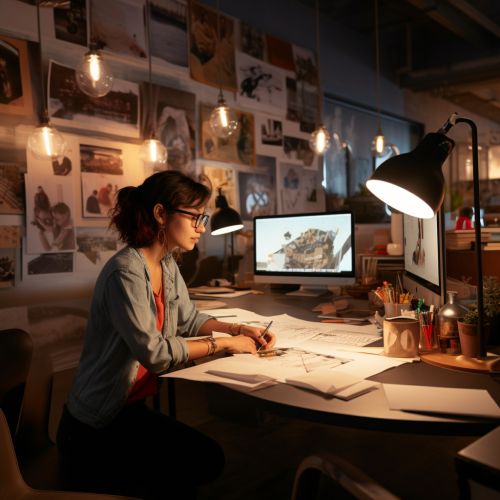Design Process
Introduction
The design process is a strategic, problem-solving approach that designers use to create functional and aesthetically pleasing products, systems, or services. It is a systematic and creative way to conceive and develop new products. The design process is a multi-step journey that takes an initial idea from concept to reality, with each step refining the idea and moving it closer to a final, tangible product product design.
Understanding the Design Process
The design process is a structured framework for identifying challenges, gathering information, generating potential solutions, refining ideas, and testing solutions. This process is used in many disciplines, including architecture, engineering, graphic design, and industrial design. The design process is often iterative, meaning that designers repeat steps as necessary, making improvements along the way until they arrive at a final design.
Stages of the Design Process
The design process typically involves several stages, each with its own set of tasks and activities. While the specific steps can vary between different fields or projects, a typical design process might include the following stages:
Define the Problem
The first stage of the design process involves defining the problem that needs to be solved. This includes understanding the needs and wants of the end-user, the constraints of the project, and the goals of the design. This stage often involves a significant amount of research, including user interviews, market research, and competitive analysis.
Ideation
Once the problem has been defined, the next stage is ideation. During this stage, designers generate a wide range of ideas for solving the problem. Techniques used during this stage might include brainstorming, sketching, mind mapping, and other creative exercises. The goal is to generate as many ideas as possible, without judging or evaluating them.
Prototype
After the ideation stage, designers create prototypes of their ideas. A prototype is a preliminary version of a product that allows designers to investigate their ideas further. Prototypes can be simple sketches, 3D models, or fully functional versions of the product. The goal of this stage is to test the feasibility of the ideas generated during the ideation stage.
Testing
Once a prototype has been created, it is tested to see how well it solves the problem. This can involve user testing, where the prototype is given to users to see how they interact with it, as well as technical testing to ensure the product functions as intended. The feedback from this testing is then used to refine the design.
Implementation
The final stage of the design process is implementation. This involves finalizing the design, preparing it for production, and launching the product. This stage can also involve marketing the product and providing support to users after the product has been launched.
Importance of the Design Process
The design process is crucial for several reasons. First, it provides a structured approach to problem-solving, ensuring that all aspects of the problem are considered and that solutions are thoroughly tested before being implemented. Second, it encourages creativity and innovation, as designers are encouraged to generate a wide range of ideas and to think outside the box. Finally, the design process is user-centered, meaning that it focuses on the needs and wants of the end-user, ensuring that the final product is both functional and desirable.
Challenges in the Design Process
Despite its benefits, the design process is not without its challenges. One of the main challenges is the need for a clear and concise definition of the problem. Without a clear understanding of what needs to be solved, it can be difficult to generate effective solutions. Another challenge is the need for thorough testing. Without adequate testing, designers may not realize until it's too late that a design doesn't work as intended or doesn't meet users' needs. Finally, the design process can be time-consuming and resource-intensive, which can be a challenge for organizations with limited resources.
Conclusion
The design process is a critical tool for designers in all fields. By providing a structured approach to problem-solving, it helps ensure that designs are user-centered, innovative, and thoroughly tested. Despite the challenges, the benefits of the design process make it an invaluable tool for creating successful designs.


